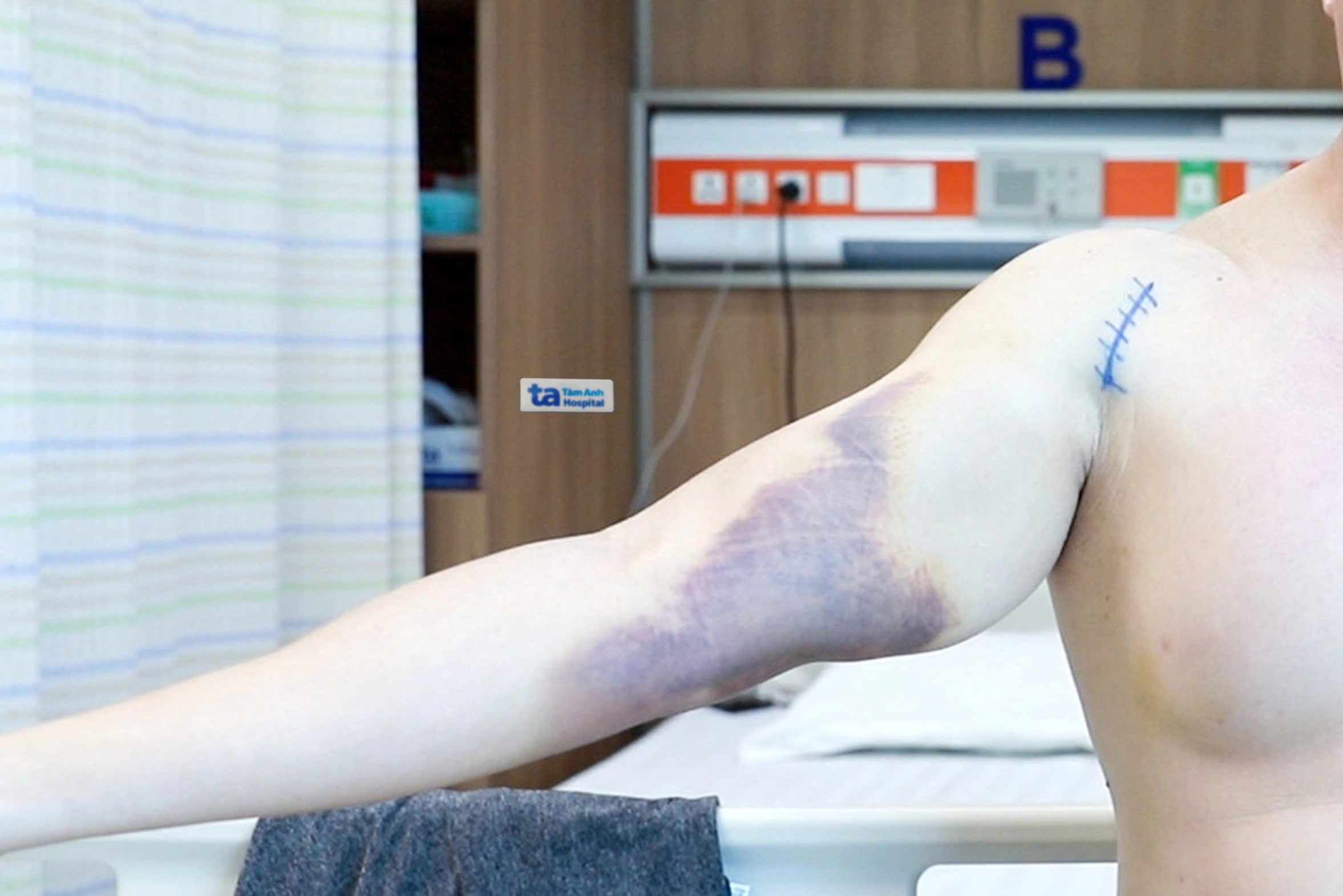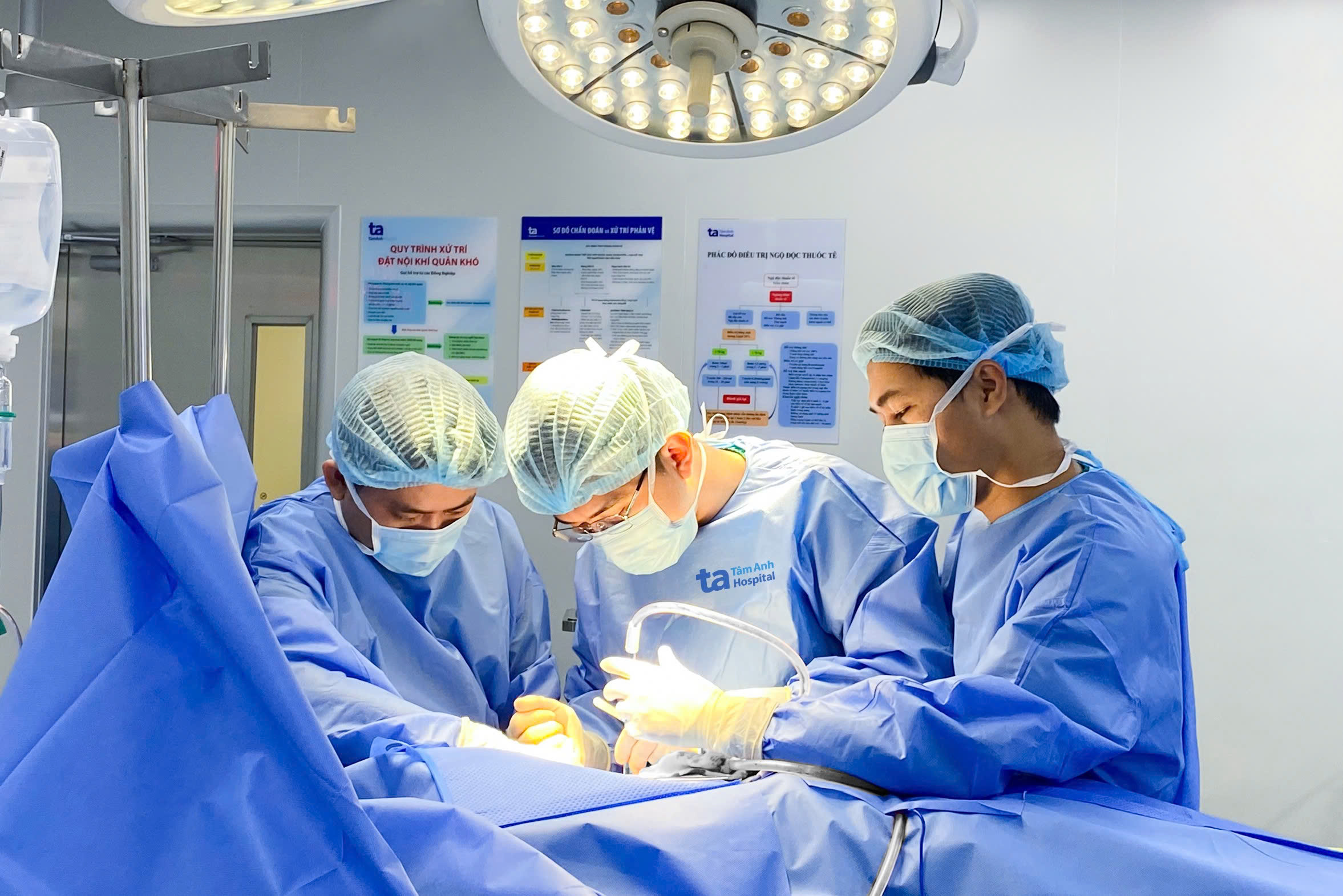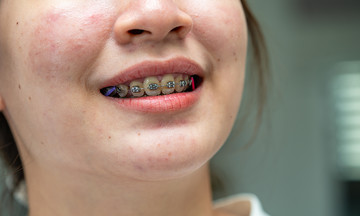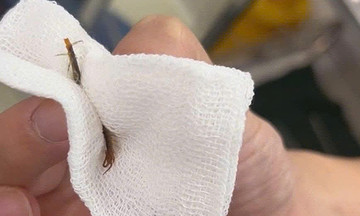21-year-old Hanh's desire for rapid weight loss led her to progressively increase her weightlifting from 5 kg to 7 kg, then 8 kg, and finally 15 kg. Five months ago, she began experiencing back pain but continued her workouts. Recently, the pain intensified in her lower back, radiating down to her buttocks and right leg. An MRI revealed herniated discs at L4, L5, and S1.
Similarly, 32-year-old Dung experienced severe pain and immobility in his right arm after rapidly lowering a weight during a bench press exercise. A 3 Tesla MRI scan showed a complete rupture of his pectoralis major muscle, with the tendon detached from the humerus and retracted towards his chest, forming a noticeable lump and significant bruising under the skin.
 |
Dung's arm, immobile with extensive bruising, upon arrival at the hospital. Photo: Tam Anh General Hospital |
Doctor Dao Duy An Duy of the Orthopedic and Trauma Center at Tam Anh General Hospital in Ho Chi Minh City, warns that while gym workouts are beneficial for health, incorrect execution can cause musculoskeletal injuries, and even pose risks like pneumothorax or stroke. The hospital has treated numerous cases of sprains, torn tendons, muscle damage, herniated discs, and premature joint degeneration, often affecting the shoulders, spine, wrists, and knees. The primary cause is prolonged incorrect technique or high-intensity training.
Doctor Duy explained that both Hanh and Dung had either overextended their backs or used improper arm positions while lifting weights that exceeded their bodies' capacity. Despite the pain, they didn't seek immediate medical attention, instead continuing to exercise or self-treating at home, exacerbating their injuries. "Pain is a warning sign that shouldn't be ignored. Injuries can worsen rapidly if further stressed," cautions Doctor Duy.
Dung underwent surgery where doctors reattached his pectoralis major tendon to the humerus, securing it with three anchor screws. He regained some movement the following day and was discharged soon after. Hanh underwent minimally invasive spinal surgery to remove the protruding disc material.
A week post-surgery, both patients were discharged, pain-free and with restored mobility. They are advised to consult their doctor before resuming gym activities, adhering to a proper training regimen and technique, and to stop exercising immediately and seek medical attention if they experience pain or any other unusual symptoms.
 |
Doctor Duy (center) performing tendon repair surgery on Dung. Photo: Tam Anh General Hospital |
For safe workouts, Doctor Duy recommends proper technique, including warm-up exercises before and cool-down stretches after each session. Protective gear and the guidance of a trainer can also be beneficial. Patience is key; start with an intensity suitable for your fitness level and gradually increase it. Listen to your body, be mindful of unusual signs, and seek medical attention promptly to prevent chronic pain, muscle atrophy, joint stiffness, or even loss of joint function.
Diagnostic procedures may include X-rays, 3 Tesla MRI scans, and CT scans with over 1,000,000 slices. Treatment options range from rest, medication, and physical therapy to casting, splinting, or surgery, depending on the severity and nature of the injury.
Phi Hong
* Patient names have been changed












